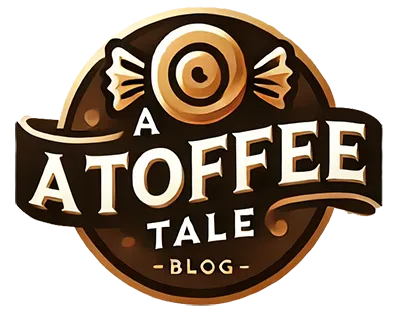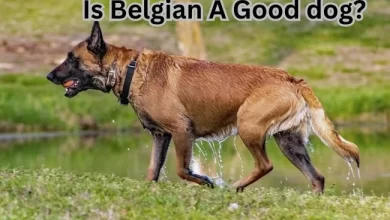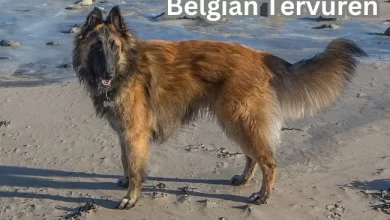How to Stop Dog Chewing Paws: Practical Tips-2024

Stop dog chewing paws is become a common problem among the pet owners.Regularly inspecting and cleaning your dog’s paws is essential for maintaining their overall paw health and preventing potential issues. Make it a part of your daily routine to carefully examine their paws for any signs of redness, swelling, or irritation, which can indicate discomfort or the presence of underlying conditions. Promptly addressing these symptoms can prevent them from worsening and ensure your dog remains comfortable.
In addition to inspection, thorough cleaning is crucial. Regularly remove any debris or foreign objects that may become lodged between their paw pads. Objects such as dirt, small stones, or plant material can cause irritation or discomfort, leading to paw chewing or licking. Gently clean their paws with pet-safe wipes or lukewarm water to keep them free from debris and maintain optimal cleanliness. By incorporating these regular paw inspections and cleaning into your routine, you can proactively monitor your dog’s paw health and take timely action to address any issues that arise, promoting their overall well-being and comfort.Now let’s discuss how to stop dog chewing paws?
Identify and Address Underlying Causes
Identifying and addressing underlying causes is crucial for effectively stop dog chewing paws. By consulting a veterinarian and following a prescribed treatment plan, you can target the root causes of paw chewing and promote better health and comfort for your dog.
Consult Veterinarian
- Professional Evaluation: Seek professional advice from a veterinarian to determine if allergies, parasites, or infections are contributing to your dog’s paw chewing behavior. A thorough examination can help identify the specific causes and guide appropriate interventions.
- Diagnostic Testing: Your veterinarian may recommend diagnostic tests such as allergy testing, skin scrapings, or blood work to pinpoint the underlying issues. Accurate diagnosis is essential for effective treatment.
Key Points:
- Schedule a veterinary visit if you notice persistent or worsening paw chewing.
- Provide your vet with detailed information about your dog’s symptoms and behavior.
Follow Treatment Plan
- Medications: Administer any prescribed medications as directed by your veterinarian. This may include antihistamines for allergies, antibiotics or antifungal treatments for infections, or antiparasitic medications for parasites.
- Topical Treatments: Apply recommended topical treatments, such as ointments or creams, to soothe and heal affected areas. Follow the vet’s instructions for application to ensure effectiveness.
- Adherence to Recommendations: Adhere to any additional recommendations from your vet, including changes in diet, environmental modifications, or follow-up visits. Proper adherence to the treatment plan is crucial for resolving underlying issues and preventing recurrence.
Key Points:
- Ensure consistent application of medications and treatments.
- Monitor your dog’s response to treatment and report any concerns to your vet.
By consulting a veterinarian and following the prescribed treatment plan, you can effectively stop dog chewing paws naturally. Addressing underlying causes such as allergies, parasites, or infections not only helps alleviate paw chewing but also improves your dog’s overall health and comfort.
Provide Distractions and Alternatives-Stop Dog Chewing Paws
Offering distractions and alternatives is a practical approach to stop dog chewing paws naturally. By providing chew toys and interactive toys, you can effectively redirect your dog’s chewing behavior and keep them mentally and physically engaged.
Chew Toys
- Safe and Durable Options: Provide a variety of safe and durable chew toys to redirect your dog’s focus from their paws. Chew toys come in various materials and designs, catering to different chewing preferences and strengths.
- Benefits: Chew toys help satisfy your dog’s natural chewing instincts, preventing them from focusing on their paws. They also contribute to dental health by reducing plaque and tartar buildup.
Key Points:
- Select chew toys made from non-toxic materials that are appropriate for your dog’s size and chewing habits.
- Regularly inspect toys for wear and tear and replace them as needed to ensure safety.
Product Examples:
- Kong Classic Rubber Toy: Ideal for stuffing with treats or frozen food, providing both chewing satisfaction and mental stimulation.
- Nylabone DuraChew Power Chew Toy: Designed for strong chewers, this toy helps keep teeth clean while redirecting chewing behavior.
- West Paw Zogoflex Bumi Tug Toy: Flexible and durable, great for interactive play and chewing.
Interactive Toys
- Puzzle Toys: Engage your dog with puzzle toys that require problem-solving to access treats or rewards. These toys provide mental stimulation and keep your dog’s mind occupied, reducing the likelihood of paw chewing.
- Interactive Games: Incorporate interactive games into your dog’s routine. Games like hide-and-seek or fetch provide physical exercise and mental engagement, helping to alleviate boredom and stress.
Key Points:
- Choose interactive toys that challenge your dog’s problem-solving skills and keep them entertained.
- Regularly rotate toys to maintain your dog’s interest and prevent boredom.
Product Examples:
- Outward Hound Hide-A-Squirrel Puzzle Toy: Encourages problem-solving as your dog searches for hidden squirrels.
- Nina Ottosson Dog Twister Puzzle Toy: Provides interactive treat-finding challenges that stimulate your dog’s mind.
- Kong Wobbler Treat Dispensing Toy: Dispensing treats as it wobbles, combining play with mental stimulation.
By providing a range of chew toys and interactive toys, you can effectively stop dog chewing paws naturally. These distractions not only redirect your dog’s attention from their paws but also contribute to their overall well-being and mental enrichment.
Promote Healthy Paws and Skin
Promoting healthy paws and skin is essential for stopping dog chewing paws naturally. By using paw balms and maintaining proper hygiene, you can support your dog’s paw health and reduce the likelihood of irritation and discomfort that may lead to chewing.
Use Paw Balms
- Moisturization: Apply a dog-safe paw balm to moisturize and protect your dog’s paw pads. Paw balms help prevent dryness, cracking, and irritation, which can contribute to the urge to chew.
- Protection: Paw balms create a protective barrier on the paw pads, shielding them from environmental factors like rough surfaces, extreme temperatures, and chemicals that could cause discomfort.
Key Points:
- Choose paw balms made from natural, non-toxic ingredients specifically formulated for pets.
- Apply the balm regularly, especially after walks or exposure to harsh conditions, to keep paws hydrated and healthy.
Product Examples:
- Musher’s Secret Paw Protection: A wax-based balm that provides long-lasting moisture and protection for paw pads.
- Vets Preferred Advanced Strength Paw Balm: Contains natural ingredients to soothe and protect dry or cracked paws.
- Paw Soother by Natural Dog Company: Moisturizes and heals dry, rough paw pads with a blend of natural butters and oils.
Maintain Hygiene
- Clean Living Environment: Keep your dog’s living environment clean to reduce exposure to allergens and irritants. Regularly clean bedding, floors, and toys to prevent the buildup of dust, dirt, and other potential triggers.
- Regular Paw Cleaning: Gently clean your dog’s paws with pet-safe wipes or lukewarm water to remove dirt and allergens. Ensure paws are thoroughly dried after cleaning to avoid moisture-related issues.
Key Points:
- Use hypoallergenic and pet-safe cleaning products to avoid introducing new irritants.
- Regularly inspect and clean your dog’s paws to address any signs of irritation or discomfort promptly.
By applying paw balms and maintaining a clean environment, you can effectively stop dog chewing paws naturally. These practices help ensure your dog’s paws remain healthy, comfortable, and free from the factors that might lead to excessive chewing.
Behavioral Training
Behavioral training is key in helping stop dog chewing paws naturally. By employing positive reinforcement and redirecting attention, you can encourage your dog to engage in more appropriate behaviors and reduce the likelihood of paw chewing.
Positive Reinforcement
- Reward Desirable Behaviors: Use positive reinforcement to reward your dog when they engage in desirable behaviors, such as playing with toys instead of chewing their paws. Rewards can include treats, praise, or additional playtime.
- Consistency: Be consistent in delivering rewards immediately after the desired behavior. This helps your dog make a clear connection between the behavior and the positive outcome, reinforcing the behavior you want to encourage.
Key Points:
- Choose high-value treats or favorite toys as rewards to increase motivation.
- Offer verbal praise and affection to strengthen the bond and encourage good behavior.
Redirect Attention
- Gentle Redirection: When you observe your dog chewing their paws, gently redirect their attention to a toy or activity they enjoy. This helps to interrupt the chewing behavior and shift their focus to something more constructive.
- Engaging Alternatives: Provide engaging alternatives, such as interactive toys or puzzle games, to keep your dog mentally stimulated and prevent boredom-driven chewing.
Key Points:
- Keep a variety of toys readily available to easily redirect your dog’s attention.
- Ensure the alternative activities are stimulating and enjoyable to effectively capture your dog’s interest.
By incorporating positive reinforcement and effective redirection techniques into your training routine, you can help stop dog chewing paws naturally. Encouraging desirable behaviors and providing engaging alternatives support your dog’s well-being and reduce the tendency to chew on their own.
Monitor and Seek Veterinary Assistance
Monitoring your dog’s progress and seeking regular veterinary assistance are essential steps in effectively stopping dog chewing paws naturally. By tracking behavior changes and consulting with your veterinarian, you can ensure that your dog receives the necessary care and adjustments to their treatment plan.
Track Progress
- Behavioral Observations: Observe changes in your dog’s paw chewing behavior over time. Note any reductions or increases in frequency, and look for patterns that might indicate underlying issues or improvements.
- Skin Condition: Monitor the condition of your dog’s paws, including signs of redness, swelling, or irritation. Document any changes in their skin health to provide accurate information to your veterinarian.
Key Points:
- Keep a detailed record of your dog’s behavior and paw condition to track progress effectively.
- Pay attention to any changes in your dog’s overall health or behavior that might impact their paw chewing.
Consult Regularly
- Follow-Up Visits: Schedule regular follow-up visits with your veterinarian to assess improvements and make necessary adjustments to the treatment plan. Regular consultations ensure that any ongoing issues are addressed promptly.
- Adjustments to Treatment: Based on your dog’s progress, your veterinarian may recommend adjustments to their treatment plan, including changes in medication, environmental management, or behavioral strategies.
Key Points:
- Communicate openly with your veterinarian about any observations or concerns.
- Follow your vet’s advice and recommendations to optimize treatment outcomes and address any persistent issues.
Conclusion
By closely monitoring your dog’s progress and maintaining regular veterinary consultations, you can effectively stop dog chewing paws naturally. This proactive approach helps ensure that your dog receives appropriate care and adjustments to their treatment plan, promoting better health and comfort.




